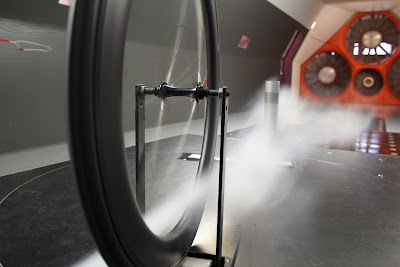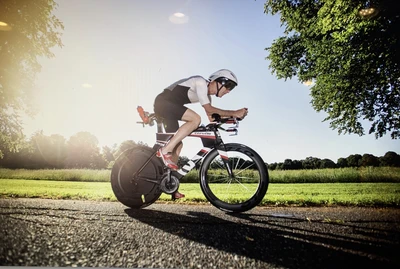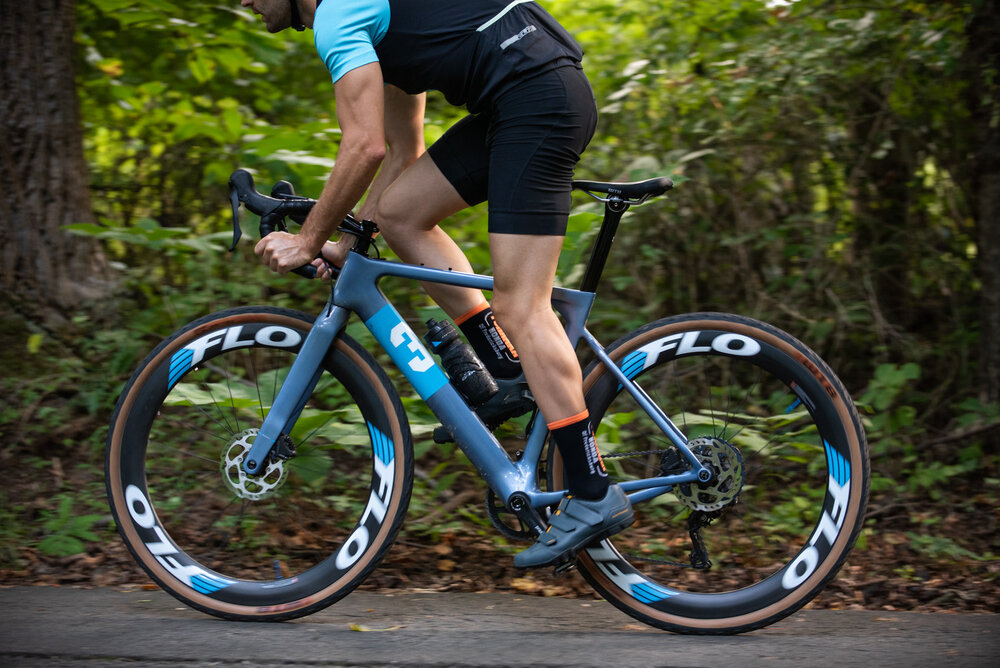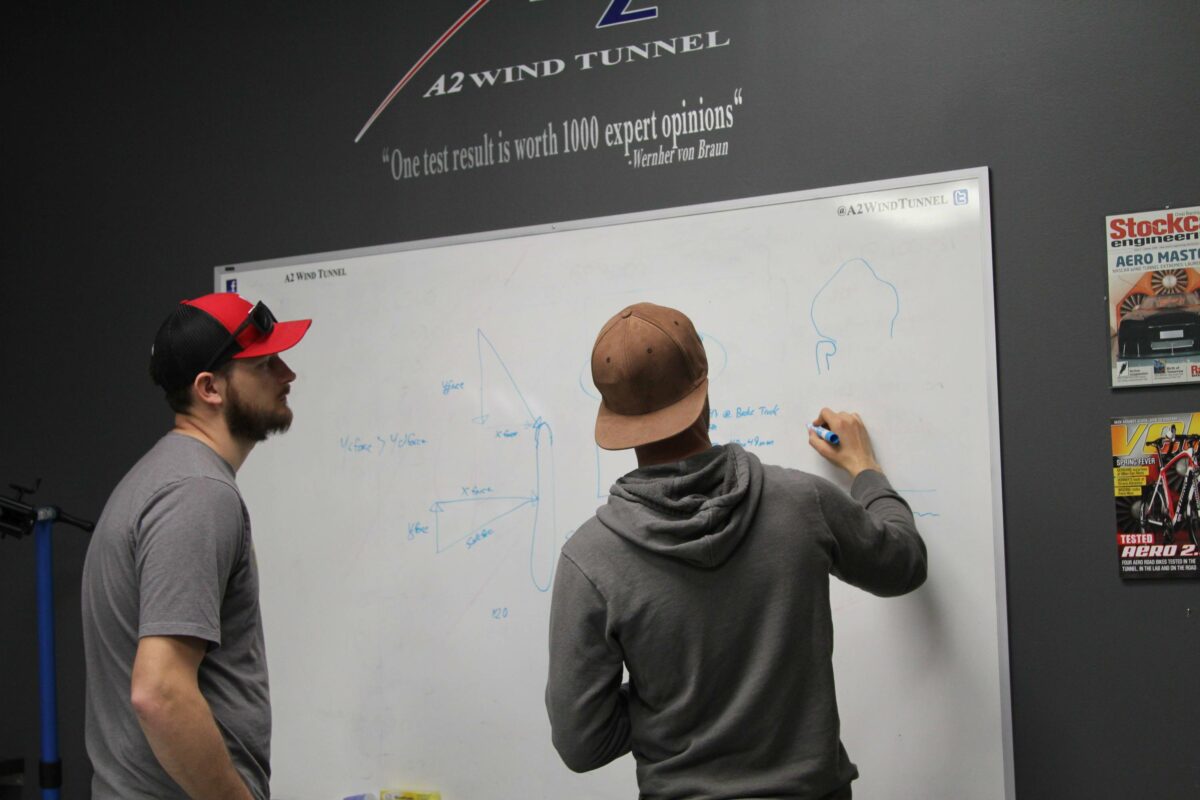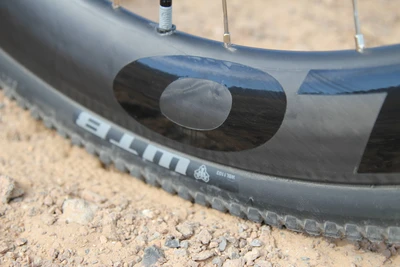Gravel bikes are all the rage. From getting farther out into nature to avoiding traffic and inattentive drivers, more cyclists are choosing to add gravel to their repertoire of rides. And let’s face it, riding gravel is fun. As a newer cycling niche, very few companies are making bike wheelsets exclusively for gravel and adventure cycling. This guide aims to help you find the best gravel wheels for your specific needs.
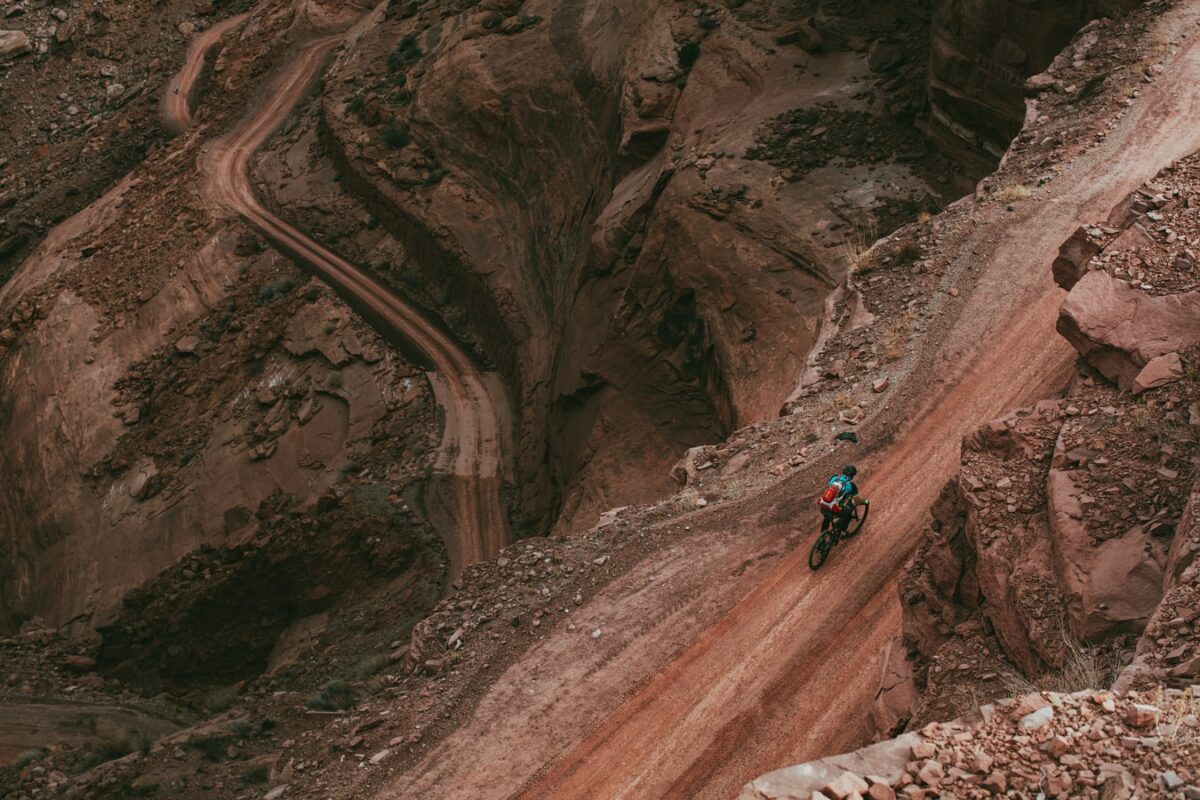
What is a gravel wheelset?
By definition, a gravel wheelset is simply a set of bicycle wheels used to ride on unpaved, gravel roads. However, as you will soon see, all gravel wheelsets are not the same. Some are uniquely tailored to the discipline and offer clear advantages.
How to Pick the Best Gravel Bike Wheels
First things first, do I need a specific gravel wheelset or can I just use a MTB wheel or road bike wheel? Can and should aren’t the same thing. You can, but should you? Keep reading to find out why a specific wheel designed for gravel tires is a better option.
Why not use road bike wheels for those who ride gravel?
Road bike wheels are designed to perform best with more narrow tires, typically in the 28 mm range. For most gravel riding, a 28mm tire is going to be too narrow to offer a comfortable ride and to avoid pinch flats. Gravel riders typically run wider tires (32mm through even 50, though most settle between 38-42mm typically.)
Gravel wheelsets also typically have a wider internal rim width to accommodate these wider tires (tyres). These wider rims allow for a greater contact patch (the amount of tire touching the surface, be it gravel or tarmac) which improves traction.
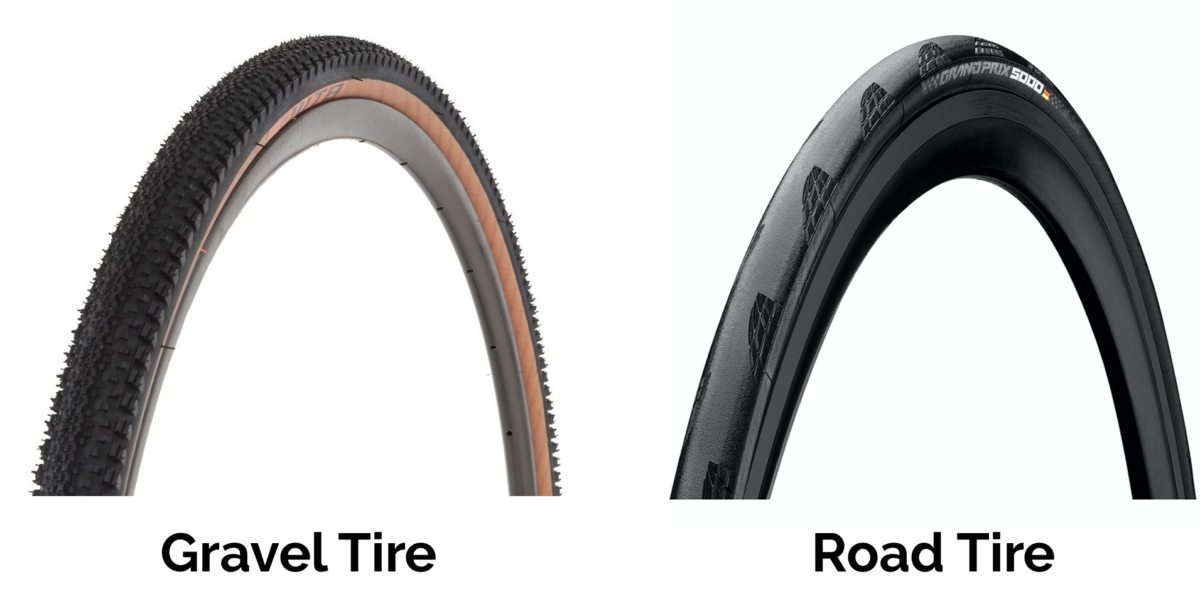
Gravel wheels accommodate gravel tires that allow the tire pressure to be run significantly lower than most road wheelsets, meaning the tire is able to absorb more of the vibrations transmitted by the gravel making the wheel faster and more comfortable. Faster, because the compliance of the tire allows less vertical up and down travel during riding (which technically, requires a greater distance to be covered by the cyclist) and more comfortable because all that chatter isn’t transmitted up into the rider. The technical term for this is impedance.
Why not use gravel wheels on my road bike then?
The wide rims and wide gravel tires typically do not fit on more narrowly constructed road bike frames. The seat stays and chain stays on most road bikes are too narrow and cause rubbing. For this reason, it’s best to avoid attempting to use a gravel wheelset on your road bike unless you are absolutely sure it will fit.
Alloy Box Rim vs. Carbon Deep Rim Gravel Wheels
Until recently, many gravel racers used boxed alloy rims. A boxed rim is named after the shape you see if you cut the rim and look at the cross-section it looks like a rectangular box. An aero rim will look more like an oval shape.
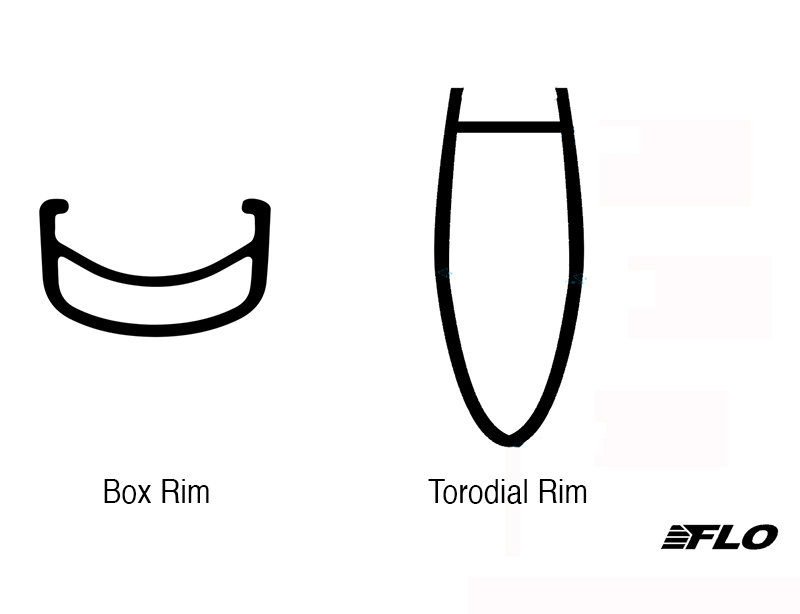
Many cyclists even use aluminum mountain bike wheelsets on their gravel bikes due to their perceived durability and a mindset of “gravel is almost like mild mountain biking, so these work well.”
Here is why we don’t think using alloy box rims via adapting road wheels or MTB wheels is the best solution.
- Speeds are significantly higher on gravel. This means aerodynamics plays a larger role in performance. This is especially true when the groups break up and you find yourself riding solo segments for miles on end. A box rim is much less aerodynamic than a carbon aero rim.
- Some of the gravel grinders events actually feature enough tarmac to make aerodynamics and rolling resistance even more significant with the higher speeds riders achieve on those sections.
- The leaf spring effect of carbon rims means the wheels themselves can act as a sort of suspension mechanism to improve ride quality.
- Alloy wheels with box MTB rims are designed for mountain bike tire widths which are typically 57-62mm (2.25″-2.5″) wide. They are often hookless, meaning there is no hook inside the rim for the tire bead to grab onto. When a narrower 35-45mm gravel tire is placed on them, this isn’t the ideal situation to avoid blow-offs, punctures, etc. Wheels designed specifically for gravel have better tire compatibility.
- Road bike rims’ narrow internal width isn’t suited to create the best tire shape for a wider gravel tire. While the tire may fit on the rim, its width is being limited by the narrow rim of the road wheel. This can cause issues in cornering performance on gravel.
- Properly designed carbon wheels are light, strong, and extremely durable. They also offer the best weight to speed ratios for routes with significant amounts of climbing.
In our view, carbon rim material is the best choice for road, triathlon, adventure bike, and gravel wheels.
Disc Versus Rim Brakes on Gravel Wheels
Almost every gravel wheel uses a disc brake. As you ride in dirt and mud, this often gets glommed onto the wheel rim. When the pad of the rim brake compresses against that dirt or mud, you don’t stop well. This is dangerous. In addition, a rim brake narrows the clearance between the fork, chainstay, and seatstay meaning all that mud starts getting trapped between your tire and the brake, slowing you down.

Disc brakes offer superior stopping power and are less affected by muddy, sandy, wet, or dirty conditions. For this reason, we highly recommend ALL gravel riders use disc brakes.
Tubeless Gravel Tire vs. Tubed Clinchers
Tubless is king on gravel. Why? Because gravel is sharp (especially the flint type gravel found at Unbound and other events). Tubeless tires do not have an inner tube in them. This means:
- They can be run at lower pressures than clinchers with inner tubes, making for a smoother ride.
- Tubeless gravel tires also help riders avoid pinch flats (aka snake bites). This happens when the tire hits a rock or bump that causes the tire to compress against the rim, creating a snake bike tear in the inner tube which leads to a rapid flat tire.
- Tubeless gravel tires use sealant. A liquid sealant rushes to fill the hole when something pierces the tire, sealing it. When combined with a plug kit, flats during a ride can be fixed rapidly. Simply insert the plug into the hole, hit the valve with CO2 or a pump, and often you are ready to roll again in quick order.
What You’ll Need to Go Tubeless on Your Gravel Bike
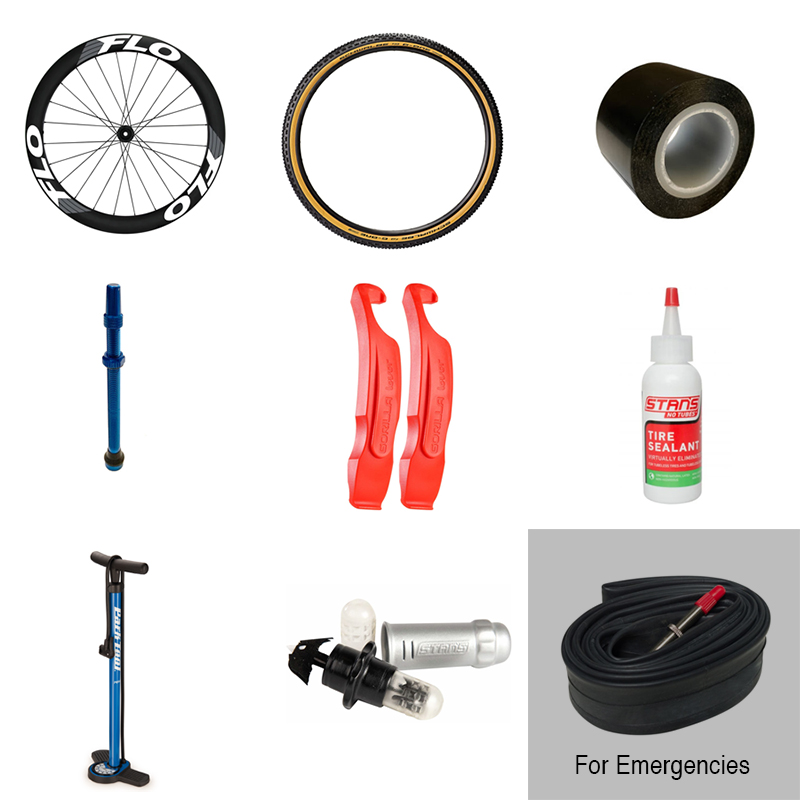
- A tubeless-ready rim. FLO G700 and G650 wheels are tubeless-ready.
- A tubeless tire. (Do NOT use a tire that is not specifically designed to be run tubeless. Bad things can and will happen. Namely, a blow-off at high speeds with a face plant onto gravel. Not fun!)
- Rim tape. Make sure to correctly apply tubeless rim tape to ensure your tubeless tires seal properly. Typically, you will want to use tubeless tape that is ~5mm wider than your internal rim width. Some riders run two layers of rim tape as an additional precaution.
- Tubeless valve since you don’t have the one on the tube.
- Sealant. We recommend Stan’s Sealant. Other brands frequently used are Orange or Muc-Off.
- A tire lever. Tubeless tires purposely fit tight onto rims for a solid seal. Getting them on with your hands alone can be tough. We’ve found these mounting tools to really help.
- A floor pump. The bead of the tire will need to be seated into the rim.
- Tubeless plug kit for the road along with a hand pump or CO2 cartridges. On extremely rough routes, some riders even carry additional sealant.
- A spare inner tube, just in case all tubeless efforts fail. You can place a tube in the wheel to get home. Just make sure to properly inflate the tire at a pressure higher than your tubeless psi.
Why FLO Cycling for Gravel?
FLO Cycling was the first brand to design a wheel 100% devoted to gravel. Offering disc brake gravel wheel sizes in both 700c and 650b, we have a wheel that is fast, durable, and a leader in engineered design. Computation fluid dynamics and wind tunnel testing shows this is (one of) the fastest gravel wheels currently available. We truly feel they are the best gravel wheels on the market. Direct to consumer pricing is an added benefit with lower prices than competitors who choose a through retailer sales model.
More Gravel Wheelset Related FAQs
What size are gravel bike wheels?
Gravel bike wheels are either 700c or 650b. If you run disc brakes, almost every frame can accept either size wheel. For more detail on whether you should use 650 or 700c wheels, see this comparison article
Are 24 spokes enough for gravel?
Yes. If the wheel is properly designed, 24 spokes work. A deeper dish wheel, like FLO’s gravel wheels, actually allows for the spoke length to be shorter than a boxed rim wheel. This shorter spoke length creates a stronger wheel. For gravel, we recommend a 24 Spoke Lacing 2X on both the drive & non-drive side. This means the spokes cross one another, unlike a radial road wheel design. This crossing makes the wheel stronger.
IS 700C the same as 29?
A 29er and 700c are the same diameter/circumference. Typically, mountain bikers refer to wheel diameter in inches and road/gravel cyclists as 700c. The one thing to note is that 29er mountain bike wheels are often designed for tire widths of 55mm+ whereas gravel wheels are designed for slightly more narrow tires, albeit not as narrow as road bikes.
Are 28mm tires good for gravel?
For lighter riders or tarmac or gravel that is not sharp or chunky, 28mm might work. However, a tire wider than 28mm would be better in almost every scenario. A wider tire allows for lower psi, better traction, more comfort, and better flat protection. (We often run 28s on our road/tri bikes. Never on our gravel bikes.
Is 32mm enough for gravel?
Many riders race on 32mm tires. We feel that riders often pick too narrow a tire. The Unbound gravel podium winners ran 42mm wide tires. There is not much speed/power loss when going slightly wider. The time saved in changing in a flat tire is more than the offset. The benefits of wider usually outweigh risking a narrower tire. Adventure cyclists doing bikepacking will almost always benefit from running a 40mm+ tire.
Is a gravel bike the only bike you need?
It depends. If you plan on using a single bike to get exercise, ride on multiple terrains, and commute on, a gravel bike is the best option. However, if you plan on road racing, crits, doing time trials or triathlons, then you may want to have more discipline-specific bikes. But if we only had one bike we could buy, gravel would be it.
Is 26 inch the same as 700c?
No. A 26-inch wheel is 559 mm, commonly known as “26 inch” with a decimal width designation such as 26 x 1.75.
How wide are gravel rims?
Some gravel rims are just adapted road bike rims and are in the 18-21mm range. Our data shows this is too narrow. FLO Gravel wheels have an internal rim width of 25mm. This wider rim width improves rolling resistance and provides increased stability.
How can I make my gravel bike more comfortable?
After ensuring you have a proper fit, the most effective way to gain more comfort is to run wider tires at lower pressure. Running a FLO gravel wheel also allows for leaf spring effect adding comfort. In addition, manufacturers make seat posts and stems that help absorb shock. Lauf even has a proprietary fork that absorbs bumps for less vibration transmittal to the rider’s body.
Are gravel bikes faster than mountain bikes?
This all depends on the terrain. In all but the most gnarly of conditions, a gravel bike will be faster than a mountain bike due to weight, aerodynamics, and geometry. For aggressive single track and downhills, the additional suspension of mountain bikes will make them faster.
Can gravel puncture a tire?
Yes, gravel can puncture a tire. The old saying is not if but when you flat on gravel. However, by using a tubeless tire on a wide rim run at the proper PSI, you can drastically reduce your chances of a puncture.
Do I need inserts for my gravel tires?
Our data shows a properly inflated tubeless tire does not need the extra weight and complexity of inserts. While they can be used, we do not recommend them as optimal on FLO Cycling’s G700 or G650.
What bike tires are best for gravel?
Gravelists and Gravelistas spend hours debating tire selection before events. Selection depends on the type of gravel and tarmac that will be encountered during the ride. Full tread, side-only tread, and sidewall suppleness all play a role. If we had to recommend an all-conditions tire, it would be the WTB Riddler 37c or the Pathfinder Pro 2Bliss Ready 42mm.
Are gravel bikes fast on the road?
Gravel road bikes can be fast on the road. They will be closer in speed to a road bike than a mountain bike or hybrid bike will. They won’t be as fast as an optimized road bike or triathlon bike. Choosing slicker tires can help increase speed.
Are gravel bikes a fad?
While the gravel bike trend is definitely exploding, calling it a fad might be premature. Cyclists are more and more wanting to avoid traffic and the accompanying risks of coexisting with cars. Gravel allows riders to venture further off highly traveled roads and have greater immersion in nature.
Is a gravel bike faster than a hybrid?
Typically, the ability to ride in the drops means a gravel bike has the strong potential to be faster than a flat bar hybrid in many situations due to the aerodynamic positioning of the rider.
How can I make my gravel bike faster?
Besides the obvious answer of rider power output (raw and w/kg), a gravel bike can be faster with better aerodynamic components and rider positioning, faster aerodynamic wheels, and lighter weight. Aerodynamics is much more important than weight in the final equation.
How do I lighten my gravel bike?
The easiest approach to drop weight is to evaluate each element and see if a lighter option exists that does not add an aero penalty. Moving from aluminum to carbon handlebars, alloy boxed wheels to carbon wheelsets, lighter saddle, reduced weight component system and more all can help. Don’t forget rider weight in the whole equation. Often riders will obsess over grams while carrying a few extra pounds themselves.
Why do gravel bikes not have suspension?
Some do have suspension. The Lauf True Grit is one of the more innovative solutions with a suspension fork. Others add seat post or stem shock absorption. Carbon gravel wheelsets also dampen the chatter and offer a smooth ride. The added weight of a MTB full suspension or fork is often not warranted on gravel unless it is extremely “chunky” gravel.
What gravel bikes do FLO’s work well with?
FLO wheels work well with:
Carbon gravel bikes like
- Boardman ADV
- Canyon Grizl CF
- Cannondale Topstone
- Can
- Devinci Hatchet
- GT Grade
- Liv Devote
- Orbea Terra
- Vitus Energie
- 3T Exploro
- Bianchi Arcadex
- Canyon Grail
- Giant Revolt
- Juliana Quincy CC Rival
- Lauf Anywhere
- Lauf True Grit
- On-One Free Ranger
- Specialized Diverge
- Vitus Substance CRX
Alloy gravel bikes like
- Canyon Grail
- Focus Atlas
- Kinesis Tripster AT
- Fuji Jari 1.3 Adventure
- Merida Silex 400
- Pinnacle Arkose
Titanium gravel bikes like
- Enigma Escape:
- Mason Bokeh
- Reilly Gradient
- Ribble CGR
- Moots Routt
Steel gravel bikes like
- Marin Nicasio
- BiVi Bunker Malvern
- Ragley Trig
- Ribble CGR
Any gravel bike will be faster with these wheels on most courses.
Parts of a Gravel Wheelset
Gravel Rims
The rim of a gravel wheel is typically constructed from alloy, aluminum, or carbon fiber. Gravel rim wheel depths are often more shallow than deep-section wheels. However, FLO Cycling’s engineers have seen the aero benefit of deeper-rimmed gravel wheels, designing a 700c wheel that is 54.9mm deep and a 650b wheel that is 58.8mm.
Gravel Spokes
Gravel wheels often have more spokes (24-32) than their equivalent road wheels (18-24 spokes). Radial spoke patterns are eschewed in favor of spokes that cross one another for added wheel strength.
Gravel Hubs
Gravel and road hubs are often used interchangeably. As long as the bearings are well sealed, this is not an issue. Rear wheels use hubs that are most often freehubs, though some gravel cyclists ride single-speed fixies.
Disc Brakes
Almost every gravel wheelset is disc brake compatible. The disc system is either six-bolt or a centerlock.
Axles
Most gravel bikes us thru axles rather than quick-release skewers. This is because thru axles handle the torque generated by disc brakes better than quick release skewers. Remember, your gravel frame and fork needs a thru axle with the correct length and thread pitch.
World-Class Bike Wheels for Gravel

FLO Cycling’s selection of world-class gravel wheelsets means either 700c or 650b set is available and affordable. Ride with the confidence that you are on a durable, stable, and super fast gravel wheel with FLO G700 or FLO G650.
Helping You Find the Best Gravel Bike Wheels
We hope this guide has helped you determine the best gravel bike wheels for your specific needs. If you have any questions, please don’t hesitate to reach out. We want educated riders who make educated bike purchasing decisions. Gravel riding should be fun and safe. Having the best gravel wheels possible helps you achieve this.
Read about the journey of development on FLO Cycling’s Gravel Wheel series.

